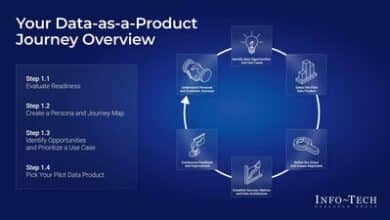In the world of business and entrepreneurship, efficiency is the name of the game. One way businesses are maximizing their operational efficiency is by utilizing integrated accounting and payroll systems. This comprehensive guide is designed to help you understand the features, benefits and implementation of these systems, paving the way for cost-effective transaction processes.
Introduction to Integrated Accounting and Payroll Systems
Accounting and payroll are two crucial aspects of any business operations. Managing them separately can be quite a challenging task. Fortunately, the integration of these systems has become a reality, proving to be a beneficial solution. An integrated accounting and payroll system is a type of software solution that combines accounting functions and payroll processing into one platform. Such a system simplifies business transactions and curbs operational bottlenecks.
This combined approach provides seamless data flow, eradicating the need for double entries and minimizing errors. Moreover, it enhances compliance with financial regulations, promotes accuracy, and results in significant time and cost savings. Progressively, a multitude of businesses are choosing to switch to these coated systems across the globe.
Benefits of Using Integrated Systems in Business
The advantages of using integrated systems in businesses are manifold. The most evident benefit being the streamlined operational process. Incorporating accounting and payroll systems into one platform elicits flawless synchronization between these two vital aspects of a business. This leads to efficient data management and a substantial reduction in manual labor.
Additionally, integrated systems contribute to financial accuracy. As all data entries are made in one place, the possibility of human error gets significantly diminished. Moreover, it offers a holistic and real-time view of the company’s financial health, empowering informed decision-making. Benefits also extend to improved compliance and risk management, as regulatory updates can be incorporated promptly by the system.
Steps to Implementing an Integrated System
Adopting an integrated system calls for careful planning and execution. Initially, business owners need to identify their accounting and payroll needs to choose a system that fits well with their operational design. Next, legacy data needs to be converted and imported into the new system. This might also be a good time to declutter and discard redundant data.
Once the prerequisites are fulfilled, the system can be programmed accordingly. Now, it becomes vital to train the staff about the new software to ensure comfortable navigation and proper utilization. To cap it off, testing is essential before the complete switch-over to confirm that the system functions as expected.
Case Studies: Success Stories with Integrated Systems
Many companies have witnessed the transformation brought about by the integrated systems. For instance, an Australian tech startup reported a 30% rise in its operational efficiency after implementing such a system. It eliminated the need for duplicate entries and resulted in considerable time and cost savings.
Similarly, a small business owner from the UK testified to better financial accuracy and improved compliance after switching to an integrated accounting and payroll system. These successful implementations show the potential of these integrated systems in modern-day businesses.
Choosing the Best Integrated System for Your Business
When it comes to selecting the right accounting and payroll system, one size certainly does not fit all. Every business has unique needs, and the choice of system depends on various factors, such as the size of the business, the complexity of operations, and the budget constraints. Furthermore, the flexibility of the system to adapt to future business growth and software support from the provider also play substantial roles.
Some popular integrated accounting and payroll systems include QuickBooks, Zoho Books, Xero, and FreshBooks. Each of these systems offers unique features and comes with its pros and cons. It is, therefore, essential to thoroughly research and possibly take some trial runs before making the final decision.
Conclusion
In summary, streamlining business processes is essential for operational efficiency, and an integrated accounting and payroll system could be the golden key to this. By allowing seamless data flow, minimizing errors, enhancing compliance, and ensuring cost and time saving, integrated systems undoubtedly pave the way forward. However, selecting a system that aligns with your business needs is paramount. That’s where Online Check Writer comes in.
A game-changer in the business finance landscape, Online Check Writer offers seamless integration with over 22,000 banks and leading accounting and payroll software. This all-in-one platform lets you pay and get paid instantly without any transaction fees. Not only does it help you manage your payments, but it also ensures that your transactions are conducted through the most secure platform. With its low-cost ACH feature, you could save hundreds, even thousands of dollars in transaction fees.
Online Check Writer, trusted by over a million users and responsible for processing over $20 Billion in transactions, promises to offer everything you need to manage your payments seamlessly. Don’t struggle anymore to get your checks printed or transferred from your favorite applications. Sign up with Online Check Writer and make things easy. Head over to their website at Online Check Writer to learn more and get started today.
Don’t miss our latest Startup guide: Bringing Convenience to Your Business: The Benefits of Digital Checks and ACH



